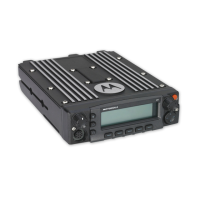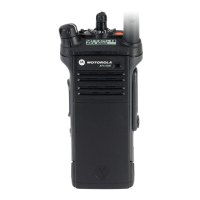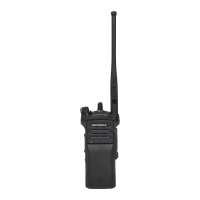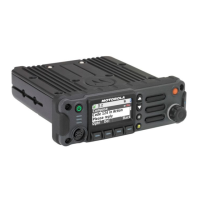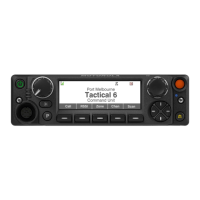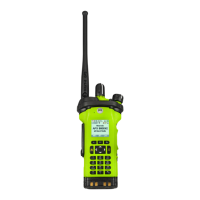Sec 2: 8-36 Disassembly/Reassembly Procedures: Ensuring Radio Submergibility
4. Observe the gauge for approximately 2 minutes.
• If the needle falls less than 2 inHg, the radio passes the vacuum test.
i. Remove the Grille Eliminator
ii. Visually inspect the Port Seal Label (21) for proper adhesion to the
Speaker Module (18). Make sure there are no wrinkles or cuts to the material that would
cause a leak. Replace seal if damaged. (See appropriate section for servicing the
seals).
iii. If the seal passes this inspection, this radio is approved for submergibility. No additional
testing is required.
iv. Replace the Speaker Grille Assembly (22) and Memory Door (28) as described in the
reassembly procedures.
• If the needle falls more than 2 inHg, the radio fails the vacuum test and the radio might
leak if submerged. Additional troubleshooting of the radio is required.
i. Keep the Grille Eliminator and Vacuum Adapter on but remove the Vacuum Pump from
the Vacuum Adapter.
ii. Goto Section “8.10.8 Pressure Test (using NTN4265_)” on page 2:8-36.
8.10.8 Pressure Test (using NTN4265_)
Pressure testing the radio is necessary only if the radio has failed the vacuum test. Do not perform
the pressure test until the vacuum test has been completed. Pressure testing involves creating a
positive pressure condition inside the radio, submerging the radio in water, and observing the radio
for a stream of bubbles (leak). Since all areas of the radio are being checked, observe the entire unit
carefully for the possibility of multiple leaks before completing this test.
NOTES:When Radio is placed under the water there will be some air trapped which will be released.
This is not a failure.
Refer to the exploded view diagrams and parts lists found in “Chapter 10: Exploded Views
and Parts Lists” on page 2:10-1.
The Grille Eliminator must be used to conduct the pressure test:
If the radio is still set up from vacuum test, skip steps 1 through 4.
To conduct the pressure test:
1. Remove the Speaker Grille (22) by following the steps from Section “8.7.1 Removal of the
Speaker Grille Assemblies (A)” on page 2:8-11 and remove the Memory Door (28).
2. Slide the top of the Grille Eliminator under the Control Top Bezel (10) and swing it down
towards the radio. Secure the Grille Eliminator using the two center screws (24) with a torque
of 10 in lbs. See Figure 8-53.
3. Ensure that an seal is attached to the Vacuum Adapter.
4. Attach the Vacuum Adapter onto the radio in the same manner as a radio battery. Ensure
both the latches are clicked into place.
5. Attach one end of the hose to the Pressure Pump. Attach the other side of the hose to the
Vacuum Adapter.
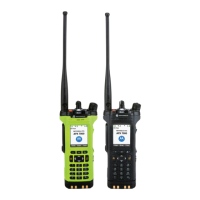
